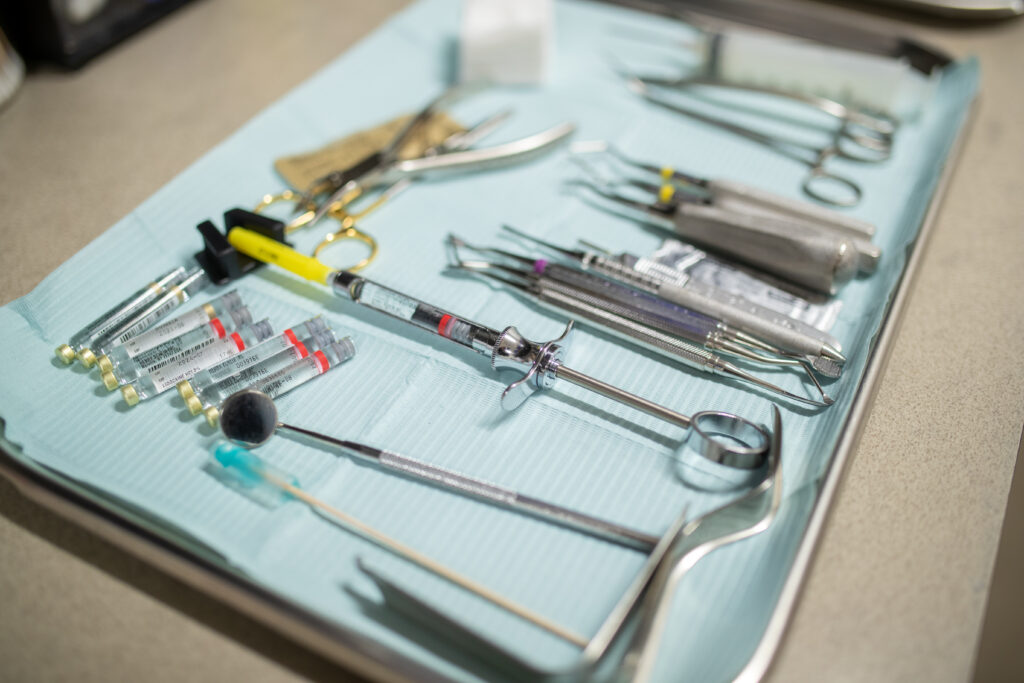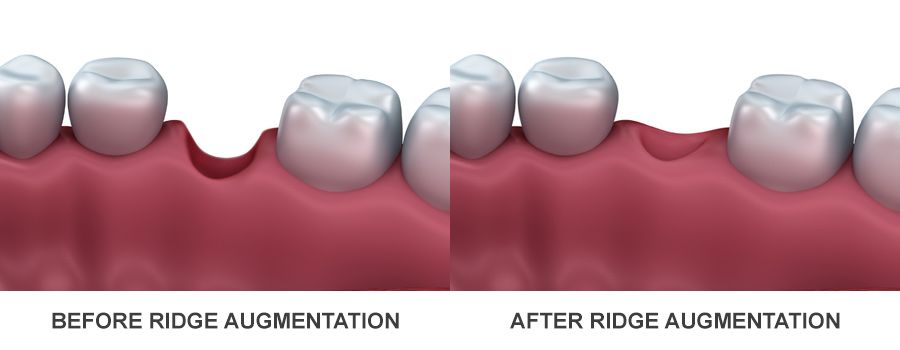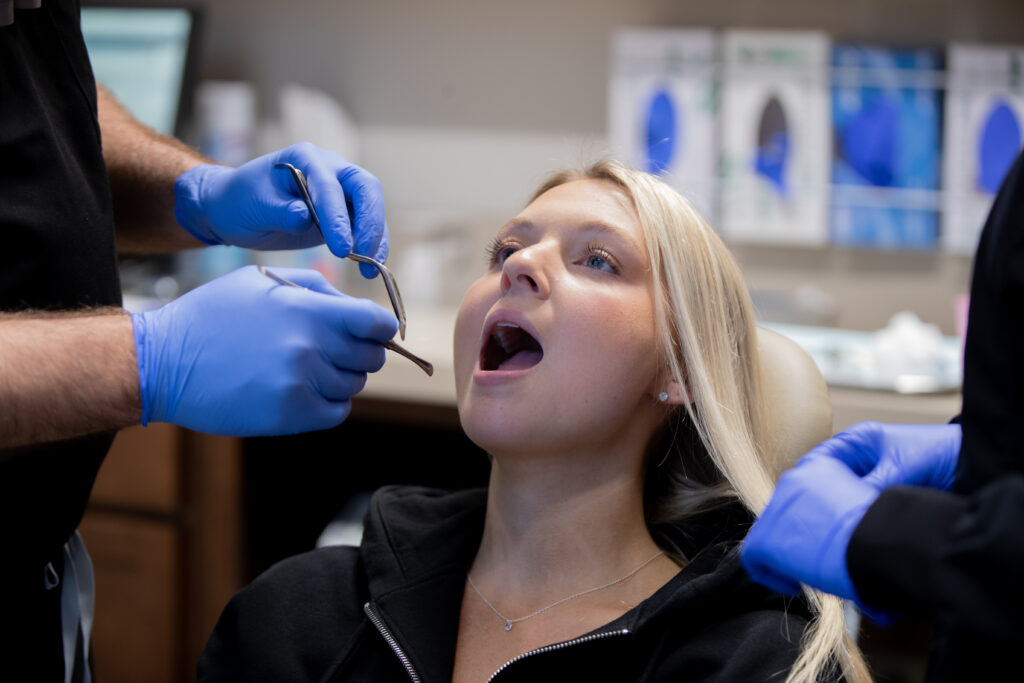Ridge Augmentation
The alveolar ridges are two narrow ridges of tissue that run just below your gums and give support to your upper and lower teeth. They also help to define the curvature and proportions of your smile. If these bones have begun to recede, particularly after tooth loss or a dental extraction, your dentist may suggest a ridge augmentation. Similar to a traditional bone graft, this treatment involves rebuilding the alveolar ridges using one of several types of tissue. The procedure can improve the fit of a removable denture and protect your long-term oral health.


What is a Ridge Augmentation?
A ridge augmentation is a common dental procedure often performed following a tooth extraction to help recreate the natural contour of the gums and jaw that may have been lost due to bone loss as a result of a tooth extraction, infection or for another reason.
The alveolar ridge of the jaw is the bone that surrounds the roots of teeth. When a tooth is removed, an empty socket is left in the alveolar ridge bone. Usually this empty socket will heal on its own, filling with bone and tissue. Sometimes when a tooth is removed, the bone surrounding the socket breaks, and it unable to heal on its own. The previous height and width of the socket will continue to deteriorate.
Rebuilding the original height and width of the alveolar ridge is not medically necessary, but may be required for dental implant placement, or for aesthetic purposes. Dental implants require bone to support their structure, and a ridge augmentation can help rebuild this bone to accommodate the implant.
How is the Oral Surgery Accomplished?
A ridge augmentation is accomplished by placing bone graft material in the area. An incision is made and the gum tissue is lifted away from the jaw bone. Often the patient’s own bone is then harvested from the back of the jaw or chin area and it is secured to the defect using tiny screws that will be removed at a later date. Donor bone may also be added. Next, the gum tissue is placed over the site and secured with sutures. Dr. Merlo may choose to use a space-maintaining product over the top of the graft to help restore the height and width of the space created by the tooth and bone loss, and into which new bone should grow. Once the area has healed, the site will be reevaluated for dental implant placement.
A ridge augmentation procedure is typically performed in Dr. Merlo‘s office under local or IV anesthesia.

Long-lasting benefits of ridge augmentation.
- Reduced chance of additional bone and tooth loss
Bone recession takes place rapidly after tooth loss or extraction. By acting proactively, your dentist can prevent recession and preserve the structure of your jawbone.
- Improved fit for dental restorations
Traditional full and partial dentures fit around the alveolar ridge, and they are made specifically to match the curvature of the bone. If your ridge is uneven or compromised, your denture may become insecure or uncomfortable. The restoration could even slip out of place. Ridge augmentation can build a strong base for your prosthetic.
- Better stability for dental implants
Dental implants need strong, healthy jaw tissue for stability. If your alveolar ridge has started to recede, dental implants can weaken or fail altogether. Ridge augmentation can restore jawbone tissue for successful implants treatment.
- Improved appearance
Your alveolar ridges form a framework for your smile. After ridge augmentation, you could enjoy a more even grin and a more youthful look.
- Missing teeth
If you are preparing for an extraction or you are missing teeth, ridge augmentation surgery may be a great way to safeguard your lifelong oral health, your smile, and your self-confidence.
Get to know us.
At Washington Oral & Facial Surgery, we know how to help you. Our board-certified surgeons and expert staff can provide the care you need to relieve the discomfort you feel.


